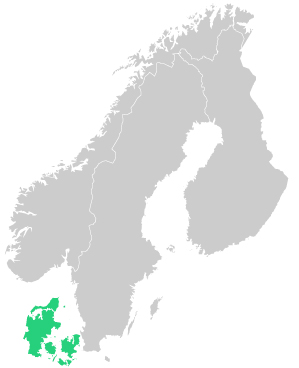read more about how azets can assist you
News in the field of Transfer Pricing
On 13 September 2019, the Danish Minister of Taxation issued a bill for consultation which would introduce a requirement that Danish companies – as a new measure – are required to submit annual transfer pricing documentation.
However, due to Covid-19, the consultation was postponed:
- L 48/2019 lapsed at the end of the parliamentary year on 5 June 2020, and parts of it were resubmitted in October as L 28/2020.
The bill repeals the existing deadline, requiring Danish companies to submit their transfer pricing documentation to the Danish Customs and Tax Administration within 60 days from the date of a request being made.
The bill also clarifies the Danish Customs and Tax Administration's right to make discretionary assessments in the event of inadequate documentation. With the new bill, there will be a legal basis for this.
The decisive factor for whether the Danish Customs and Tax Administration has the right to make a discretionary assessment is whether sufficient transfer pricing documentation has been submitted at the time of the new submission deadline.
Entry into force
It was proposed that the stricter rules should apply to transfer pricing documentation prepared for income years starting on 2 April 2020 or later (income year 2021).
This means that Danish companies with financial years following the calendar year must complete their transfer pricing documentation for the income year 2021 no later than 30 June 2022, and that the documentation must be submitted no later than 60 days after the notification deadline, i.e. no later than 29 August 2022.
Please note that this is a submitted bill, and that the above can thus change in connection with the legislative process.
When two independent companies trade with each other, the trade is regulated by free market forces. This means that prices and conditions are affected by the buyer’s and seller’s contrary interests in the agreement. The seller wants to sell at the highest possible price, and the buyer wants to buy at the lowest possible price. The final price lies somewhere in between.
HOWEVER, when the two trading companies are related, for example, in a group, there will often be many common interests. This puts the market forces out of play, and concepts such as transfer pricing and the arm’s length principal come into play.
As a tax expert at Azets, I often advise affiliated companies of the applicable rules for commerce. In this blog post, I will highlight some of the key terms and applicable legislation.
What is transfer pricing (TP)?
Related companies, for example a group, will often do business with each other in different contexts. This business should take place under market conditions corresponding to the business being regulated by free market forces. This means that the price shall be in accordance with the price that there would be between independent parties.
When this price has to be fixed, it is called transfer pricing (TP). In other words, the concept of transfer pricing concerns the pricing of transactions between related companies, including the internal rules for settlement, etc.
The pricing and thus the calculation of taxable income shall be made according to the arm’s length principle.
What is the arm’s length principle?
The arm’s length principle means that the controlled (related) parties for transactions with each other, shall do business as if they were independent.
Application of the arm’s length principle means that prices and conditions of the controlled transaction are compared and possibly replaced with the arm’s length prices and conditions that would be agreed if the same transaction had taken place between independent parties. The taxable income is calculated accordingly.
Two fundamental conditions must be met when a controlled transaction must be identified, defined and recognised:
- the transaction must position the parties better than before the transaction,
- the transaction must be better than the parties’ realistically available alternatives to the transaction.
To whom does the arm’s length principle apply?
The rules of the arm’s length principle apply to affiliated companies, branches and majority shareholders. That means companies where someone holds more than 50% of the capital or controls more than 50% of the votes.
A company that owns more than 50.5% of shares in another company is affiliated with it, even though it only has 10% of the votes.
The shareholdings of natural persons are included. If one person owns all the shares in three different companies, the three companies are affiliated. This also applies even if the three companies have different owners if they are closely related to each other.
The group definition in this area is therefore not the same as for the area of taxation, where only companies that are affiliated, and the shareholding of natural persons should not be included.
Requirements for documentation
In Denmark, companies are obligated to provide information to the tax authorities on intercompany transactions. In many cases, companies must prepare written documentation that such transactions take place according to the arm’s length principle.
An important exception
The specific requirements for written documentation for intercompany transactions and the arm’s length principle do not apply to smaller groups, etc. That is, groups with fewer than 250 employees and that either has a balance below DKK 125 million or a turnover below DKK 250 million.
The assessment of whether the limits are exceeded are calculated at group level, where all the companies are included (also foreign companies). Therefore, a small Danish company may well be covered by the rules if it is owned by a large international group.
In connection with intercompany transactions with companies outside the EU/EEA, or in non-agreement countries, it must always be documented in writing regardless of the size of the group.
Although the smaller groups do not have to prepare documentation, they are required to trade with each other on arm’s length conditions.
Duty of disclosure
Affiliated companies, also those that are covered by the exception clause, are obligated to provide the tax authorities with information on the group connection. This applies regardless of whether they are trading – or have other transactions – with each other or not.
If there are transactions between the companies, they must also provide summary information on transaction type and size. This is done as part of the tax return.
Which controlled transactions are covered by mandatory documentation and the arm’s length principle?
Controlled transactions include all trade and economic relations between the parties.
An example is the delivery of goods, services, transfer of assets, intangible assets that are made available and financial account.
In a situation where there are transactions between a permanent place of business in Denmark and a head office abroad (or vice versa: a permanent place of business abroad and a Danish head office), it is only the transactions that must be on arm’s length conditions (according to the rules on calculating the income of a permanent place of business) that are covered by the rules of mandatory documentation and duty of disclosure.
BEPS – Base erosion and profit shifting
“Base erosion and profit shifting” (BEPS) refers to tax avoidance strategies where multinational companies exploit different countries’ tax systems to transfer profits to countries with no or low taxes.
Under a comprehensive framework programme, over 100 countries and jurisdictions are collaborating to implement BEPS measures and tackle BEPS. In June 2017, over 70 countries signed the framework programme, including Denmark – whereupon the framework programme gained more legitimacy.
The Danish rules will to a great extent be adapted so that they are consistent with BEPS guidelines. It should be noted that the guidelines of OECD do not have the same legal source value as the provisions of the new Tax Control Act.
Fines
Concerning transfer pricing documentation fines, it remains to be seen whether the Danish tax authorities (SKAT) will send cases for fine assessment, where the only shortcoming is that transfer pricing documentation is prepared simultaneously with the tax return.
In Denmark, fines of up to DKK 200,000 have been given within transfer pricing.

